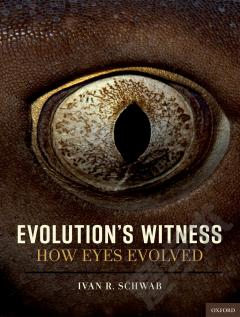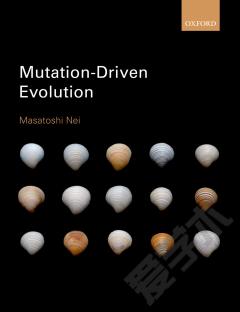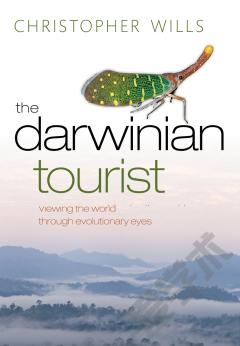Evolution's Witness —— How Eyes Evolved
----- 进化的见证:眼睛如何演进
Table of Contents Foreword: Russell Fernald PhD Acknowledgments Introduction Prologue: Molecular Genesis: Hadean Eon 4600-3750 million years ago Chapters 1. The age of first cellular life Archean Eon 3750-2500 million years ago Prokaryotes Early cells-protobionts First life First witness The road to cellular success Retinal Photolyases and cryptochromes Sunlight and blue light Beginning to organize Genetic machinery-the toolkit Prokaryotic gifts Further organization 2. The age of complex cellular life Proterozoic Eon 2500-543 million years ago Cryogenian Period 580-650 million years ago Ediacaran Period 650-543 million years ago Inception of Eukaryotes Nucleated Kleptomaniacs Euglena gracilis Bridging the Gap to Metozoa 3. Eukaryotes organize and metozoans arise Neoproterozoic Era 1000-543 millions years ago Cryogenian Period 850-650 million years ago Ediacaran Period 650-543 million years ago Multicellular animals Sensory Input The Eye and the Brain Metazoans and their eyes 4. Early animals prepare the ground Ediacaran Period 650-543 million years ago A major genetic step Urbilaterians Another major genetic step Wormy beginnings Genetic development of eyes Annelids Mollusks take the stage Kimberella quadrata Acanthochiton communis Small Shelly Fauna 5. Vision's big bang blazes the trail Early Paleozoic Era, Cambrian Explosion 543-490 million years ago The Burgess Shale Invertebrates in ascendancy The first eye Trilobites More invertebrates and their eyes appear Specific examples 6. The age of Arthropods A major phylum begins: Paleozoic era, Cambrian Period 534-490 million years ago Compound Eye Development Apposition Eye The Crabs Cambrian 7. Vertebrates Gain a Foothold Paleozoic Era, Cambrian Period 543-490 million years ago Phylum Chordata First true vertebrates Conodonts Building a vertebrate eye Tapetum Why Color vision? 8. Shelly fauna rule the sea Paleozoic Era Ordovician 490-445 million years ago Mollusa Bivalvia Gastropoda 9. The piscine eye develops Silurian 445-415 million years ago Vertebrate expansion Placoderms Elasmobranchs - 10.The piscine eye matures Early Devonian Period 415-362 million years ago Bony fish appear Anatomy of Piscine eye The outer coats of the eye The Lens Neurology and optics Habitat expansion Piscine camouflage 11. Insects arise to fly Paleozoic Era Early Devonian 415-398 million years ago Arthropods come ashore The Superposition Eye The apposition eye 12. Stealth, Speed and Predation Paleozoic Era Devonian 415-362 million years ago Arachnida 13. The age of Tetrapods and Terrestrials Late Devonian Period 385-362 million years ago, Vertebrate Animalia comes ashore Vertebrate quest for land Early tetrapodian eyes The challenge of a terrestrial environment Eyelids and the lacrimal system Extraocular muscles Tear Glands Cornea and lens Retina and vision Consolidation of the assumption of land 14.Terrestrial life flourishes Carboniferous 362-299 million years ago Permian 299-251 million years ago Vertebrates Synapsids and their eyes Diapsids and their eyes Invertebrates Permian extinction 15. Reptiles push the ocular envelope The age of reptiles Mesozoic Era Triassic 251-208 million years ago Synapsids Sauropsids Anapsids Diapsids Adnexa of the reptilian eye Eyelids Lepidosaurs Archosaurs 16. March of the Archosaurs Mesozoic Era Triassic 251-208 million years ago Jurassic 208-145 million years ago Archosaurs The Order Testudines (turtles, terrapins, and tortoises) Turtle Eye Crocodilians Archosaurian sisters Ichthyosaurs 17. Dinosaurs and their companions Mesozoic Era Triassic 251-208 million years ago Jurassic 208-145 million years ago Pterosaurs Dinosaurs Sauropods Theropods 18. Cephalopods change direction Mesozoic Era Jurassic 208-145 million years ago Coleoids Cephalopod lens Extraocular muscles Coleoid Expansion 19. Snakes arise from the ground Cretaceous (145-65million years ago) Fossorial lizards Recreating an eye 20. The Age of Birds - The eye is taken to great heights Mesozoic Era Cretaceous (145-65 million years ago) Tertiary Period (65-2million years ago) Birds arise Globe morphology Globose Globe Flattened Globe Tubular Eye Orbital size and contents Visual fields Eyelids Nictitans Cornea Iris and pupil Accommodation Uvea: Choroid, ciliary body, iris Retina Visual Processing Oil Droplets Macular design Area Centralis Single fovea Infula Convexiclivate fovea-Single deep fovea Bifovate retina White-#ronted Bee Eater Pecten Neurologic evolution 21. Pollinators Co-Evolve Mesozoic and Cenozoic Eras Jurassic 208-145 million years ago Cretaceous 145-64 million years ago Tertiary 65-2 million years ago The Earth in bloom A bounty for insects Social Hymenoptera Wasp, Bees, Ants, and Sawflies True Flies and a new eye Diptera Brachyceran flies 22. Mammalia diversifies Mesozoic and Cenozoic Eras Mid to late Jurassic 161 to 145 million years ago) Cretaceous 145-65 million years ago Early to mid Tertiary Period 65-56 million years ago) Mammals thrive The descent of color vision Marsupials 23. The Age of Mammals Mesozoic and Cenozoic Era Late Cretaceous 100-65 million years ago Tertiary 65-1.8 million years ago Quaternary1.8 million years ago to present Mammals extend their dominance Placental Mammals Primate tuning of color vision? 24. Planktonic soup evolves Cenozoic Era Tertiary 65 to1.8 million years ago Quaternary 1.8 million years ago to present Tiny aquatic Arthropods Testing the limits of eye size Copepods Transformation of larval eyes 25. Mammals return to the sea Tertiary 65-1.8 million years ago Quaternary 1.8 million years ago to present Aquatic Mammals 26. The visual witness and a conscious brain Cenozoic Era Quaternary period 1.8 million years ago-present The human eye The direction of the visual witness Appendices A The human eye-a camera style eye B Extraocular muscles Medial rectus Superior oblique Retractor bulbi Trochlea C Retinal Vascularization Evolution of retinal vascularization Mammalian forms of retinal vascularization D Evolution of the cornea and ocular coats Safeguarding precious contents E Accommodation F Crystalline lens G Photoreceptor cells H Neurologic evolution in birds References by Chapter Glossary Index
{{comment.content}}








 京公网安备 11010802027623号
京公网安备 11010802027623号